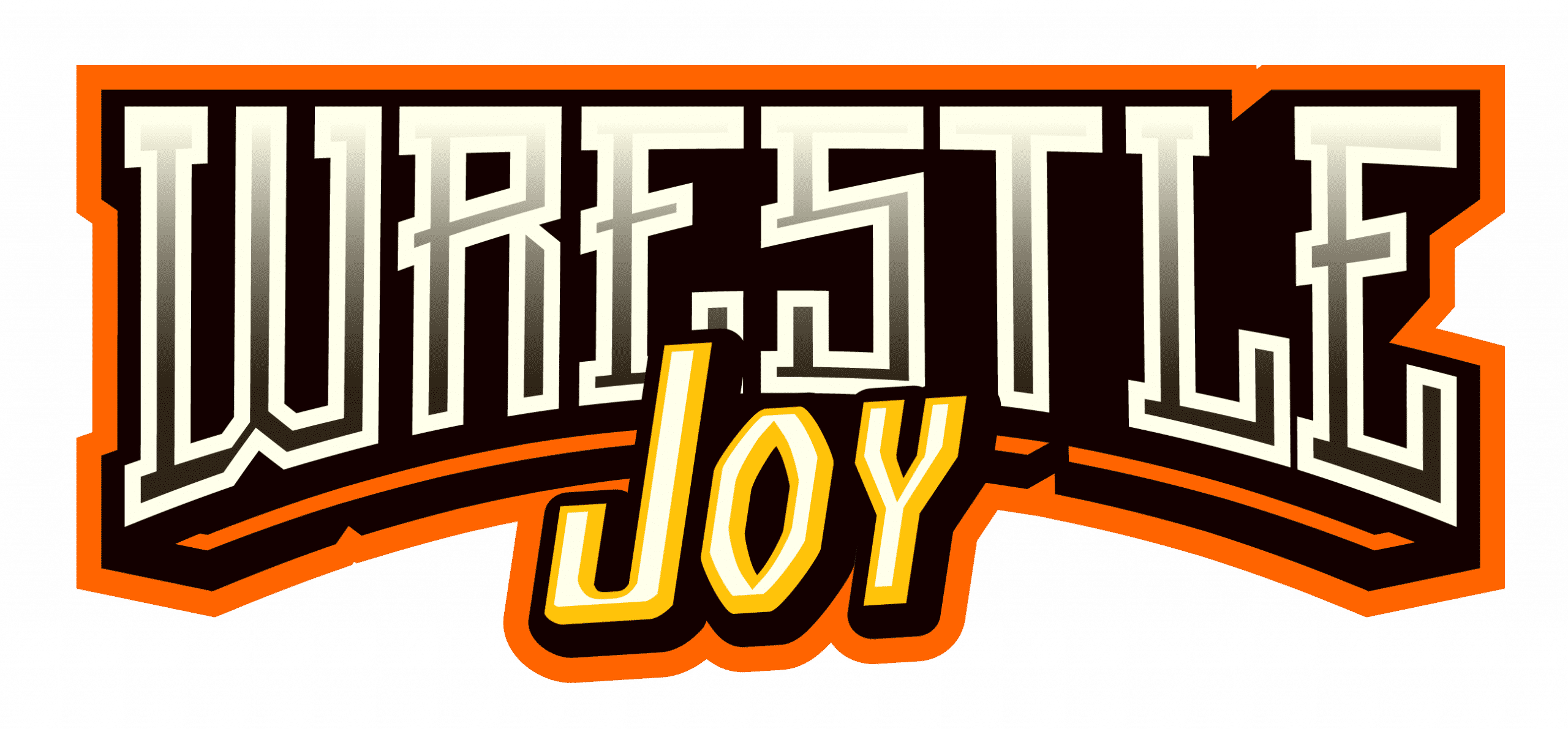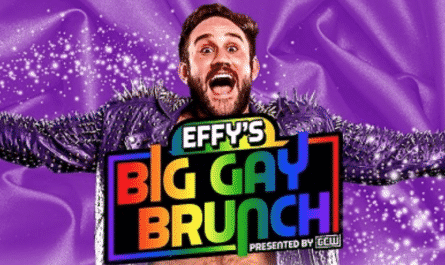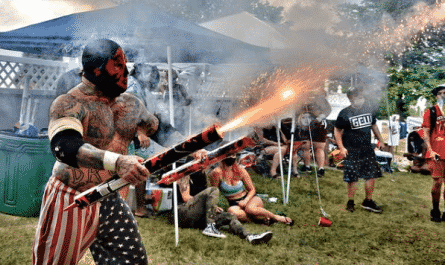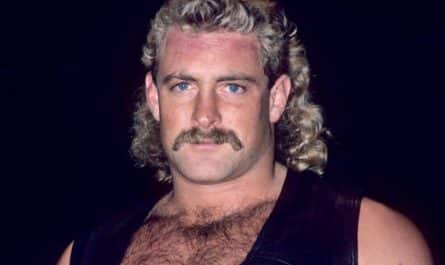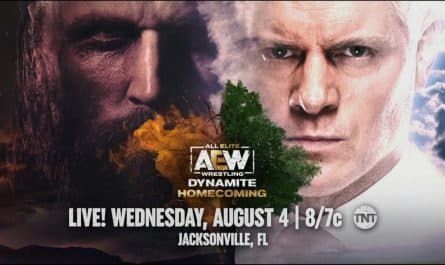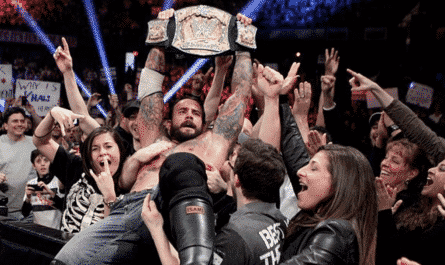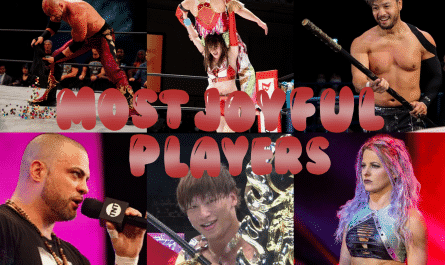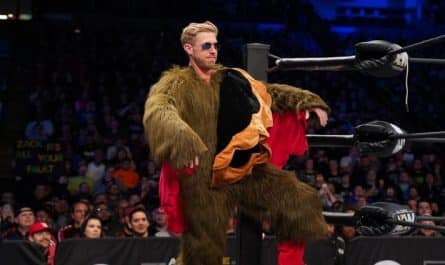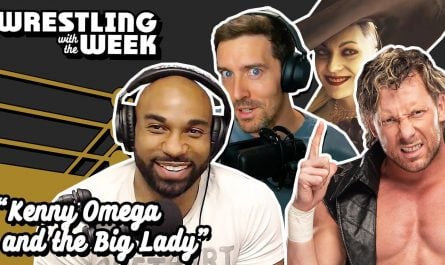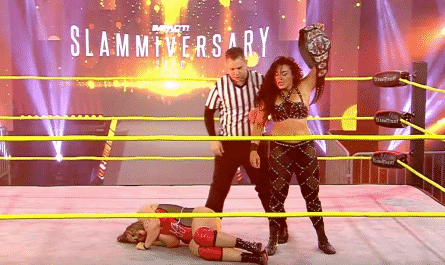If 1985 was the year the mainstream accepted professional wrestling, 1986 was when the medium found its identity within that mainstream. While Wrestlemania 2 might not have been a critical or creative success, it made a lot of money at the box office. More importantly, it helped push the WWF’s brutal national touring schedule. During this era, the Fed would run up to three house shows per night. Running hot shows meant that the promotion needed more top stars than just World Champion Hulk Hogan. The WWF focused on building new top draws, as one of its most recognizable planned his exit from the business.
Roddy Piper was a wrestling superstar long before his 1985 feud with Hulk Hogan. By 1986, fans had grown tired of booing the Rowdy Scot. Even Vince McMahon couldn’t deny his popularity. Piper took a leave of absence after Mania 2 to consider his career options. In his time away, the famed Piper’s Pit, which played host to some of the most important angles in mid-80s WWF television, was rebranded as The Flower Shop. Hosted by Adrian Adonis, working a gimmick that modern fans would never accept, The Flower Shop usurped the Pit as the sight for many of 86’s most important moments. During Adonis’ run, he took many cheap shots at the absent Piper, ensuring that he would be a full-fledged babyface when he returned. The seeds for Wrestlemania III were laid only a few weeks after the close of Mania 2.
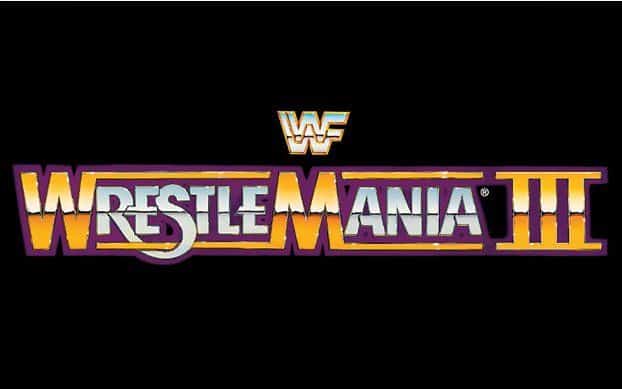
Meanwhile, the success of McMahon’s major show inspired promoters from around the country to follow suit. Some, like Jim Crockett, were lucrative. Others were met with varying degrees of success. Namely, Verne Gagne’s AWA, which, contrary to popular thought, didn’t wither away and die when Hogan left. 1985 was a solid year for the company. With Rick Martel as a stable, if not bland babyface champion, the promotion saw strong gate receipts. However, it was obvious who the real stars of the promotion were.
In 1983, months before the dawn of Hulkamania, two similarly-built bodybuilders from Minnesota debuted for Ole Anderson’s Georgia Championship Wrestling. Joe Laurinaitis and Mike Hegstrand, under Paul Ellering and inspired by the popular Mad Max films, became wrestling legends after embracing the characters of Animal and Hawk, the Road Warriors. After holding the NWA National tag team titles, the trio made their way back “home” to Minnesota to wrestle for Gagne.
Initially billed as heels, Gagne quickly figured no one was interested in booing two charismatic human action figures. For all the talk that Gagne never recovered from losing Hogan, the legend of the LOD was built in the AWA. Hawk and Animal became the company’s top-drawing attraction, winning the AWA World Tag titles quickly. After the failed Pro Wrestling USA experiment, the Road Warriors began splitting their time between the AWA, Crockett, and All Japan. After more than a year, it became too much. The LOD gave their notice to leave the AWA, and Gagne planned one last major show with the duo atop the territory.
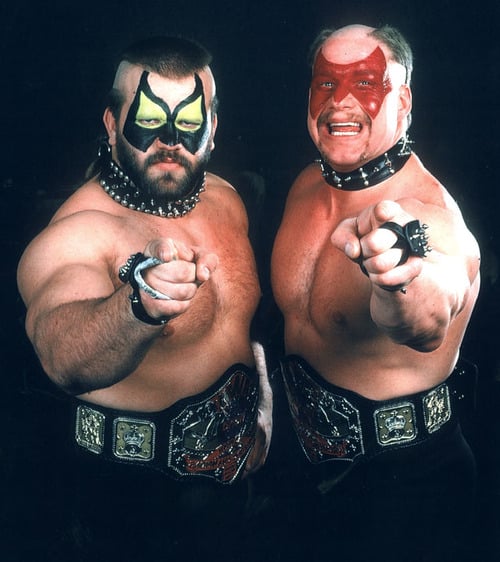
WrestleRock 86 was to be the AWA’s answer to Wrestlemania. Unlike the Superclash events promoted by Gagne, WrestleRock was an AWA exclusive show. Featuring the Road Warriors in a steel cage match against their top rivals, The Fabulous Freebird contingent of Michael PS Hayes and Jimmy Garvin (who themselves were splitting time with Texas-based WCCW). The rest of the card featured some top-notch talent, including Curt Hennig & Scott Hall (the AWA tag champs), Bruiser Brody, Jimmy Snuka, Martel, Harley Race, Barry Windham & Mike Rotunda (fresh from the WWF), Sgt. Slaughter, and from All Japan, Giant Baba and Tiger Mask (aka Mitsuharu Misawa).
The AWA World title match between champ Stan Hansen and 53-year-old Nick Bockwinkel was smartly kept on the mid-card. The show drew 23,000 people, which is more than Wrestlemania 1, but the cavernous Metrodome in Minneapolis looked empty. Unfortunately for Gagne, the most memorable part of the show was its God-awful Super Bowl Shuffle-inspired WrestleRock Rumble “rap music video.” The less said about that, the better.
While Gagne struggled to remain relevant in a shifting landscape, McMahon, without the help of former booker George Scott, sought to elevate his talent. Ricky the Dragon Steamboat forged a reputation almost a decade earlier as one of the greatest babyface talents in history. The WWF programmed the wholesome good guy with a newcomer who’d already established himself as the roster’s vilest heel.
Jake Roberts was a long-traveled veteran before ever stepping foot in the WWF. But, it was under McMahon’s vision that The Snake would find his most significant notoriety. Roberts and Steamboat faced each other in the main event of the May Saturday Night’s Main Event. The match never even started as Roberts hit Steamboat with one of the most vicious DDTs in history. Roberts dropped Steamboat on the concrete floor as the sickening thud of the Dragon’s skull echoed through the camera. A major rivalry was born.
Intercontinental Champion Randy Macho Man Savage’s issues with former champion Tito Santana and George the Animal Steele were still hot. Savage defended the belt across the country against both men and even teamed with Jesse the Body Ventura to face the two of them. As for tag teams, The British Bulldogs and the Hart Foundation held up the company from a workrate standpoint, bringing the Stu Hart-influenced Calgary Strong Style to a national audience. The tag teams often headlined the C shows. In short time, McMahon used his vast television network to elevate these talents into top drawing feuds.
On the same May Saturday Night’s Main Event, Paul Orndorff lost to Adonis by disqualification. Orndorff headlined the first Mania, teaming with Roddy Piper, but turned babyface later that year and cemented himself as Hogan’s most trusted ally. That position didn’t seem to be helping Orndorff, who was constantly reminded of that by his former manager Booby Heenan.
As spring shifted into summer, Jim Crockett Productions embarked on one of its most ambitious experiments yet, The Great American Bash. Crockett scheduled thirteen live events, some inside major stadiums. His stars competed alongside country music concerts from David Allen Coe, Waylon Jennings, and George Jones. Some of the events were smash hits like the 23,000 tickets sold in Charlotte’s Memorial Stadium. Others, like the July 4th show in Memphis, were not, as only 1,000 people showed up to the Liberty Bowl. Showing that the business was still local, Crockett decided to promote the Memphis show without support from Jerry Jarrett and Jerry Lawler, who outdrew the Bash with their regular Monday night show at the Mid-South Coliseum. Not even Waylon Jennings could top the King of Memphis.
Ric Flair defended the NWA World Heavyweight title every night of the tour and lost the belt to Dusty Rhodes before a 15,000 person sellout at the Greensboro Coliseum. But the real story of the tour was the best-of-seven series for the vacant United States Title between Magnum TA and Nikita Koloff. The previous year, Magnum exploded onto the scene with a star-making performance against Tully Blanchard at Starrcade 85. Booker Dusty Rhodes positioned Magnum as Crockett’s answer to Hulk Hogan. He had a rough and tumble energy that captured the hearts of fans. Going down 0-3, TA valiantly battled back before securing the final win in front of a dynamic crowd who physically embrace their battered hero after winning the title. Watching Magnum with the crowd, it’s not hard to see what Crocket was trying to do. Though the Bash had a few bumps, the tour was remarkably successful, helping JCP earn more than $21 million in 1986.
While Crockett carried across the south, the WWF built the biggest drawing feud of the Hogan era. Orndorff had grown tired of the chastising from Heenan and Adonis. During an episode of The Flower Shop, Orndorff called Hulk Hogan, asking for the champ’s help in a tag team match against Heenan Family associates, King Kong Bundy and Big John Studd. Hogan refuses to take his friend’s call because he was busy in the gym and embarrassed Orndorff. The two did team up to face Studd and Bundy, but Orndorff turned his back on Hogan and rejoined the Heenan Family during the match.
The ensuing feud becomes one of, if not the most, financially successful of the era. Hogan and Orndorff is such a smash at the box office that the WWF hosts a stadium show of their own. The Big Event is held on August 28th at Toronto’s Exhibition Stadium with Hogan and Orndorff in the main event. Roberts and Steamboat’s bitter rivalry also boils over at The Big Event. The show draws over 61,000 fans, becoming the precursor to Summerslam. The match ends in a weak DQ finish, but the feud continued through the fall of 86 and crept into the beginning of 1987. The Hogan/Orndorf rivalry doesn’t get the recognition it deserves because it wasn’t a Mania match but deserves an article of its own.
Studd and Bundy teamed on the Big Event to face a masked team allegedly from Japan. Called The Machines, the masked duo of Big Machine (Blackjack Mulligan), Super Machine (Masked Superstar aka Demolition Axe), and Giant Machine (Andre the Giant) showed up after Andre was kayfabe suspended. The suspension allowed him to have some time off to heal from a back injury and film The Princess Bride. This was the WWF’s first attempt to do the Midnight Rider angle where everyone knows who’s under the mask but pretends not to, annoying the heel. The Machines would add Piper Machine and Hulk Machine for various house show matches. The angle fizzled in late-86, and Heenan openly advocated for allowing the Giant to return from suspension.
On the subject of WWF television, in the fall of 86, the top two WWF programs, Championship and All Star Wrestling, were redubbed WWF Superstars of Wrestling (later Superstars) and Wrestling Challenge. The main cable program Tuesday Night Titans faded. The focus shifted toward the Monday evening Prime Time Wrestling, which would eventually evolve into Raw. With the changes in television, the programs moved toward their Mania III focus. As Roberts and Steamboat end their feud, the Dragon becomes focused on defeating Savage for the Intercontinental title. Savage, who’s held the championship for over a year, decides to crush Steamboat’s throat with a ring bell, and for the second time in a year, the Dragon is hauled away on a stretcher.
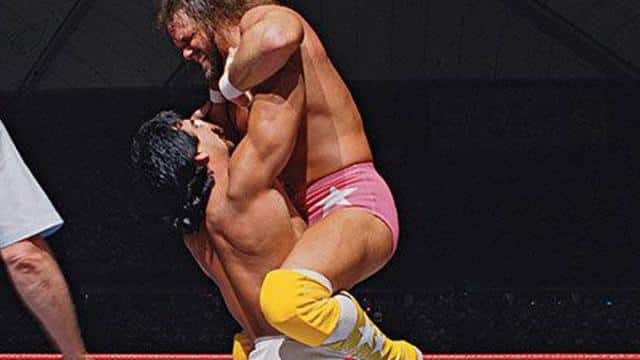
Meanwhile, Roberts became a heel to cool to boo. The Snake was to have a run with Hogan for the title, but McMahon pulled the plug after an encounter between the two on the Snake Pit ends with Roberts getting cheers. Instead, the cool heel is programmed with a babyface that even WWF crowds couldn’t stand, The Honkytonk Man. In masterful double turn, Honky crushes Roberts’ skull with a Fender acoustic guitar. The players shifted, and the board was set for 1987.
Crockett’s plans for Starrcade 86 upended after a car accident ended the career of Magnum TA. The company shifted the red hot Nikita Koloff into the role, and while the show drew well, Koloff wasn’t Magnum TA. In some ways, the promotion never recovered from the loss of Terry Allen. As 1986 rolled into 1987, Crockett began a series of critical mistakes that would eventually destroy the company.
When Roddy Piper returned to WWF TV in the summer of 86, he immediately targeted Adonis and his Flower Shop. The two were able to keep their long-running rivalry interesting through the fall and winter. As the card for Wrestlemania III took shape, Piper announced this show would be his last. Hollywood came calling for the Rowdy One. After his first retirement, Piper landed roles in the cult classics Hell Comes to Frogtown and John Carpenter’s seminal sci-fi classic They Live. But first, Piper needed to silence Adorable Adrian Adonis.
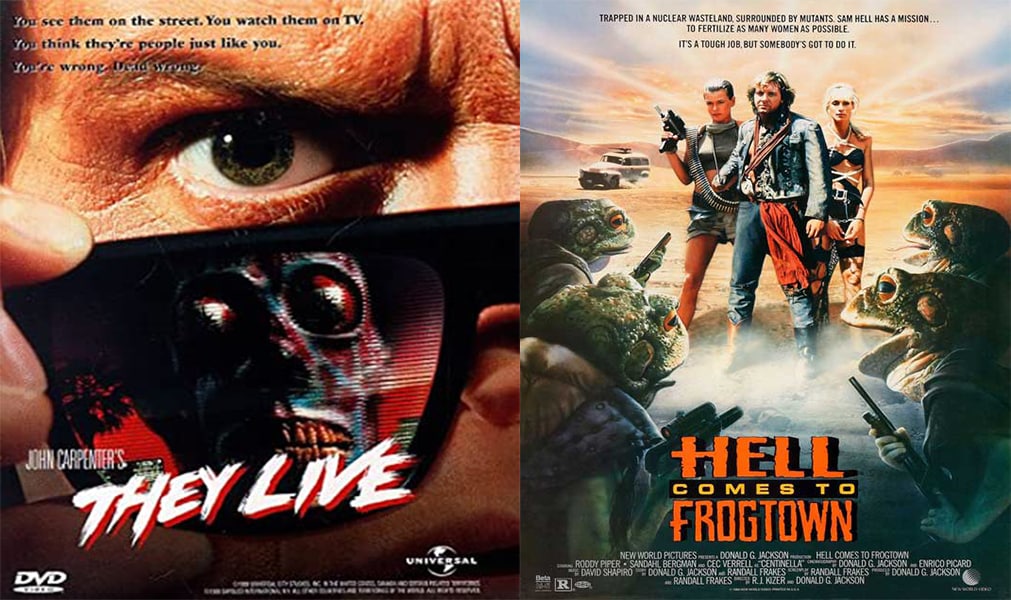
The Hogan/Orndorff feud ended with a classic steel cage match on the January Saturday Night’s Main Event. The following week, a returning Andre was awarded a trophy for being undefeated for fifteen years. Then, Hogan is given a much larger trophy for holding the WWF title for three years. In probably the best acting of the Giant’s career, Andre shows subtle dissatisfaction with the awards and walks out of Piper’s Pit.
The following week, Jesse Ventura and Piper argue on behalf of two, wondering why Andre shouldn’t have a title match himself. Ventura promises to bring the Giant back to the Pit the following week if Piper can secure Hogan. Finally, the two meet again, but this time Andre is accompanied by Heenan. In this famous moment, the Giant rips Hogan’s crucifix necklace and challenges him for the belt. It’s some of the best storytelling the company has ever done.
Mania III was a massive event at the Pontiac Silverdome in suburban Detroit. With a card featuring Steamboat and Savage, Roberts and Honkytonk, and of course, the epic main event. After the overabundance of celebrities at Mania 2, this time it’s streamlined. Entertainment Tonight’s Mary Hart and Baseball great Bob Uecker do more than enough.
The devilish Alice Cooper is a perfect foil to Jimmy Hart while corning Roberts. Missing from the show was Orndorff, who desperately needed time off for a herniated disc in his neck. The company also worried that Andre himself might not be ready to go for Mania. The company kept Orndorff on standby in case the Giant’s back wasn’t healthy enough to compete.
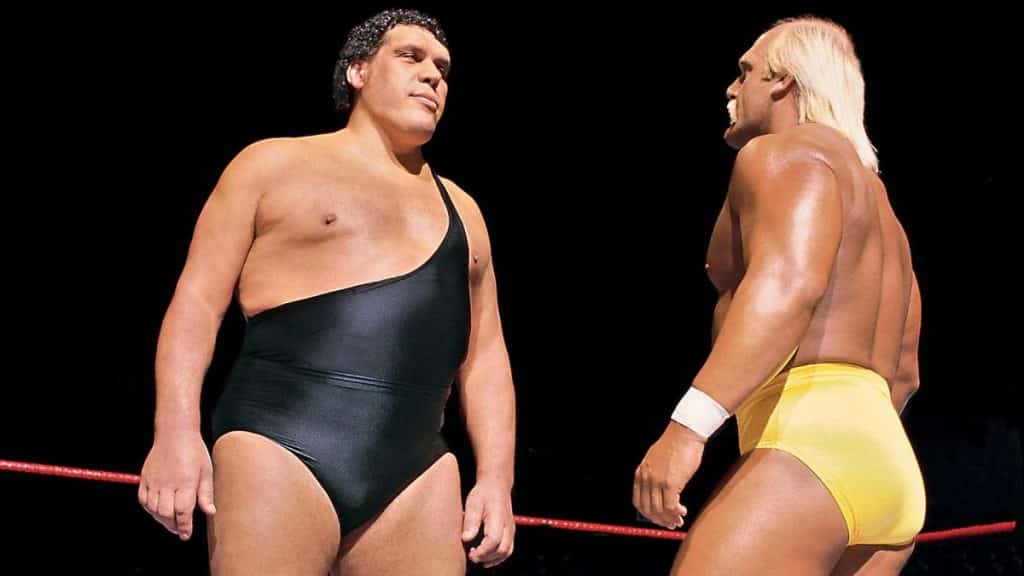
In the end, 93,000 (or 78,000 depending on who you listen to) fill the Silverdome. Finally, the WWF found the right mix of celebrities and storytelling that helped define Wrestlemania as what’s still considered the largest spectacle on the wrestling calendar.
